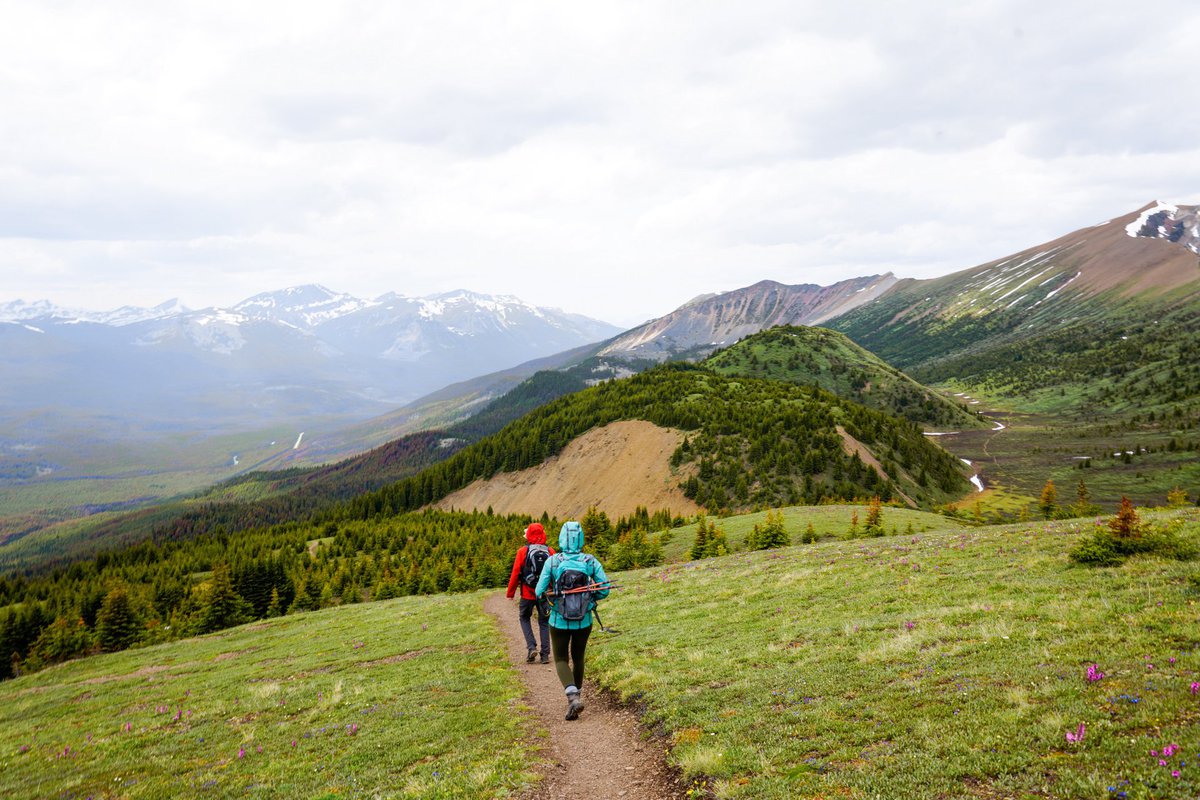People worldwide watched in horror this summer as Jasper battled out-of-control wildfires. Despite the efforts of many, a third of the town’s homes and buildings were destroyed, leaving a deep scar on this cherished place. While Parks Canada is still actively fighting fires and facilitating the safe return of residents and businesses, it is crucial to consider how Jasper will reinvent and rebuild itself for the long term. While early efforts are rightfully focused on housing and essential services, rebuilding trails and recreational infrastructure will be equally essential, as they form the lifeblood of this special place.
Jasper can learn from other communities and parks forced to rebuild following severe natural disasters. These communities and parks have found that trails and recreational infrastructure were crucial to their mental, physical, and economic recovery. These assets offer far more than just recreation; they offer well-documented health benefits from exposure to nature, economic revival, environmental restoration, safety, and resilience in future events.
For these reasons, Jasper’s post-fire restoration plans must include access to roads, trails, and campgrounds.
Trails for Economic Revitalization
Jasper is usually the second most visited national park in the Parks Canada system, after neighbouring Banff. Visitors, drawn by the Park’s natural beauty and thousands of kilometres of trails, contribute around $13 million annually to the local economy. Jasper’s regional economy is clearly at risk in the wake of these fires.
With an economy based almost entirely on tourism and more than half of Jasper’s business operators unable to survive for more than two months without taking on new debt, restoring visitor amenities and access to trails and areas frequented by tour operators and guides becomes a crucial step in recovery.
Environmental Stewardship and Visitor Management
While we are still waiting to hear details about the current state of the trails in Jasper, It is common in fire-ravaged areas to see understory vegetation destroyed, burnt trees and damaged trails. Restoring the trails helps prevent further damage and spur natural recovery. In the case of Jasper, there will be an opportunity to rebuild and/or replace Jasper’s infrastructure to enhance environmental protection while managing visitor behaviours and use. Achieving this balance will require a proactive approach that prioritizes adequate infrastructure, informed decision-making, and strategic planning. Before the fire, Jasper officials acknowledged difficulties in delivering quality visitor services and programs, with its over 1,000+ ageing assets combined with the volume of visitor use during peak periods.
Developing and maintaining infrastructure that directs visitor behaviour while minimizing environmental impact is one of the most effective strategies for protecting our parks.
Safety and Resilience
In addition to their recreational value, trails can play a vital role in landscape resilience, especially as wildfires become more frequent. Well-planned trail systems integrate into wildfire management strategies, serving as fire breaks, access points for firefighters, and emergency egress routes before or during a fire. After a fire, trails in burnt-over landscapes can serve as educational tools, helping visitors understand fire recovery and the impact of wildfire on watershed health.
Future trail construction should consider fireworthiness as a critical factor. For example, natural trails that have experienced melted culverts could be converted into rock-armored low-water crossings, increasing their resilience. In some cases, trails have provided access to remote areas during fire suppression efforts, and some have even acted as fire breaks, potentially saving homes. Upgrading infrastructure with fireproof materials, like replacing wooden bridges with more durable fireproof alternatives, may involve higher upfront costs but will ultimately prove more sustainable.
Collaboration and Cooperation
The outstanding leadership, support, cooperation, and collaboration between various agencies, including the Municipality of Jasper, local businesses, the province of Alberta, Parks Canada, and the Government of Canada, is heartening. Jasper faced a unique and challenging situation as one of only two municipalities located within a national park. Yet, the commitment of all levels of government to work together has ensured a safe and swift emergency response. This spirit of collaboration is essential moving forward as Jasper embarks on the long road to recovery.
Conservation, community and Resiliency
Rebuilding Jasper requires a holistic and forward-thinking approach that integrates conservation, community needs, and resilience. By investing in resilient post-fire restoration and infrastructure, we can ensure that Jasper National Park remains both protected and accessible. As we look to the future, let us seize this opportunity to rebuild Jasper in a way that honours its past while preparing for the challenges and opportunities ahead.


